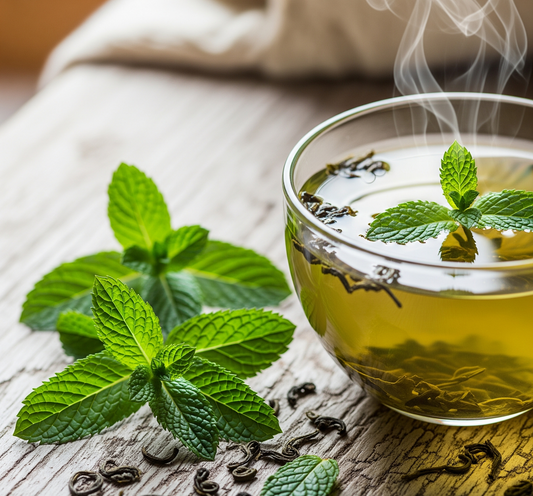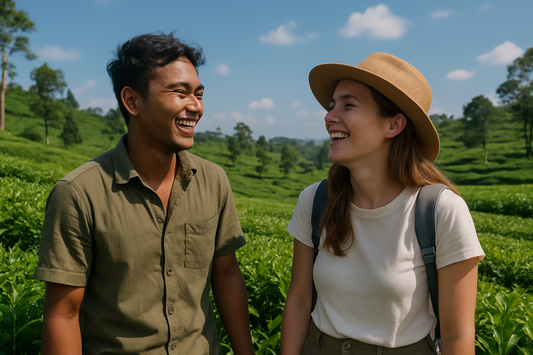Oolong tea, a unique beverage between green and black tea, contains moderate caffeine levels, typically ranging from 30 to 50 mg per 8-ounce cup. Its flavor profile varies widely due to different processing methods, offering complex tastes from floral to nutty. Oolong tea is also associated with various health benefits, including antioxidant properties, weight management, and improved heart health. Its rich history and diverse varieties, particularly from China and Taiwan, enhance its appeal among tea enthusiasts.
The world of oolong tea is a fascinating one! For novice tea drinkers, oolong can seem a bit mysterious. And rightly so because the tea famously falls in between the green and black tea. If you’re one of those novice tea drinkers, then that statement itself might be confusing to you.
So, before we look into the deeper truths of the oolong tea, let’s just get the caffeine truth out of the way. Yes, oolong tea like all other teas does contain caffeine. This is because Camelia Sinensis contains caffeine. The amount of caffeine you’re getting in each cup however depends on how the oolong was processed.
But the real question is how does it fare compared to other brews out there.
Oolong Tea and Caffeine
Packed with an array of flavors, the oolong tea also contains a load of caffeine in them. This is a given fact because Camellia Sinensis consists of caffeine. But the caffeine content in oolong tea can vary based on several factors, including the type of oolong tea, the growing conditions, and the brewing method. According to an article on Medical News Today, on average, it is common to find 10 to 50 milligrams (mg) of caffeine per 8-ounce cup. This places it right between the sweet spot of green tea and black tea in terms of caffeine content.
Oolong Tea vs. Green Tea
Oolong tea typically contains more caffeine than green tea. Green tea generally contains less caffeine, about 30 to 5o mg per 8-ounce cup as noted by Healthline. Both types of tea offer a moderate caffeine boost, but if you're sensitive to caffeine, green tea might be the gentler option.
Oolong Tea vs. Black Tea
Black tea generally has the highest caffeine content among traditional teas. It contains about 40 to 90 mg of caffeine per 8-ounce cup. Oolong tea falls between black and green teas, with caffeine levels ranging from 30 to 50 mg per 8-ounce cup. This makes oolong tea a moderate choice if you want a caffeine boost but find black tea too strong.
Oolong Tea vs. White Tea
White tea typically has the lowest caffeine content, when brewed correctly among traditional teas, ranging from 6 to 55 mg per 8-ounce cup. Oolong tea, with its partial oxidation, has higher caffeine levels, ranging from 30 to 50 mg per 8-ounce cup. If you’re looking to reduce caffeine intake, white tea might be a better option, while oolong tea offers a moderate caffeine level with a more complex flavor.
Oolong Tea vs. Coffee
When comparing oolong tea to coffee, coffee obviously contains significantly more caffeine. An 8-ounce cup of brewed coffee contains approximately 95 milligrams of caffeine, which is about twice the amount found in a similar serving of oolong tea. Therefore, if you're looking for a beverage with less caffeine but still want a bit of a boost, oolong tea is a better option between the two.
So now that we know almost everything about oolong and caffeine, let’s take a step back and walk into the history of the brew and everything oolong.
A Brief History of Oolong Tea
Oolong tea, also known as 'Wu-Long,' which translates to 'Black Dragon' in Chinese. There is a myth that it gets its name from the appearance of the leaves.The traditionally dark and curled leaves can resemble little dragons, adding an element of enchantment to your tea-drinking experience. But another parable behind the name has a more logical twist to it. Legend has it that the tea that we know as oolong tea now was originally known as “Qing Cha,” or “Cyan Tea.”

In ancient China, the term "wuqing", meaning "bruising color," illustrated the nuanced perception of colors that often differed from Western categorizations. "Wuqing" combined the concepts of black (hēi) and cyan (qīng), reflecting a broad spectrum that ranged from blue to green to black. This term was used to describe the appearance of leaves, such as tea leaves, after they had been physically distressed during processing, resulting in a dark, bluish-green hue.
This holistic approach to color terminology highlights the fluid and descriptive nature of Chinese color perception, where a single term could encompass multiple shades and their contextual qualities. When wulong tea first emerged in Fujian, it was especially rich and dark in color. Locally in Anxi, it was called “wuliang cha,” which means “black and good tea.” And whichever version of the origin story is true, it is to come to the conclusion that oolong is a pretty cool name.
Oolong teas come in a wide range of varieties. Some are closer to the taste and appearance of dark black tea, while others resemble green teas. Nepal Tea Collective currently has six different types of oolong teas in their collection. The taste profile ranges from biscuit to honey to sweet melons. There are quite an infinity of flavors packed into a type of tea.
Processing history of Oolong tea
So the question begs to be asked. Where do all these flavors come from? The unique processing method of Oolong tea places it between green and black tea in terms of fermentation levels. It undergoes more fermentation than green tea but less than black tea, giving it distinctive flavor profiles, aroma, and color. This balance results in a tea that can offer the best of both worlds: the fresh, grassy notes of green tea and the rich, robust flavors of black tea.

Oolong tea gained significant popularity during the Qing Dynasty when Emperor Qianlong fell in love with its aroma and flavors. Tightly rolled Oolongs became especially popular because they could withstand multiple steeps, making them perfect for extended tea ceremonies. These ceremonies often used special Yixing teapots made of distinct purple clay, adding another layer of tradition and elegance to the Oolong tea experience.
In the modern day, each type of oolong tea has its own unique flair, but they all go through a similar process to bring out their distinctive flavors and aromas. First, after the tea leaves are picked, they are spread out over large surfaces to wither. This step allows moisture to evaporate, makes the leaves more pliable, and enhances their aromatic qualities. Then comes the shaking, where the leaves are gently bruised to promote oxidation. This process is repeated several times, alternating with more withering, to deepen the flavor and aroma.
Next, the leaves undergo pan-firing, a process also known as "kill-green," to halt further oxidation and in essence remove all the green colors. The time and temperature of this step are crucial, as they affect the final character of the tea. Afterward, the leaves are rolled in various ways depending on the style—some are twisted into long strips, while others are rolled into semi-ball shapes. This rolling step shapes the leaves, reduces moisture, and extracts more flavor. Finally, the leaves are dried to remove remaining moisture and enhance their aroma. Most oolong teas are also roasted, which adds another layer of flavor.
Health Benefits of Oolong Tea

Oolong tea is not only enjoyed for its taste but also for its numerous health benefits. Here are some key health benefits associated with oolong tea:
Antioxidant Properties: Oolong tea is rich in antioxidants, which help combat free radicals in the body, reducing oxidative stress and lowering the risk of chronic diseases. A study published in the International Journal of Molecular Sciences studied the amount of antioxidants released under various steeping time and temperature. The study claims that the oolong tea released the most antioxidants at 100 °C for 3 min and exhibited the strongest antioxidant activity.
Weight Management: Some studies including a clinical trial done by the School of Traditional Chinese Materia Medicine, suggest that oolong tea can aid in weight management by boosting metabolism and improving fat oxidation. The same research also shows that consuming oolong tea can result in less abdominal fat gain and significant weight loss in overweight and obese individuals.
Heart Health: Regular consumption of oolong tea has been linked to improved heart health including reduced blood pressure and lower cholesterol levels. According to several studies, including one published by the British Journal of Nutrition, it was found that people who drink at least 10 ounces of oolong tea per week have lower risks of high total cholesterol, triglyceride, and LDL cholesterol levels. Additionally, in another study published under Journal of Epidemiology and Community Health, the study claimed men who drink one or more cups of oolong tea per day have a lower risk of heart disease.
Bone Health: Oolong tea contains minerals like calcium and magnesium, which can contribute to stronger bones and reduced risk of osteoporosis. According to observational studies whose findings were published through several universities including Shantou University Medical College, claim that long-term consumption of oolong tea may have beneficial effects on bone health especially among postmenopausal women.
Mental Alertness: The moderate caffeine content in oolong tea can enhance mental alertness and focus without causing the jitters associated with higher caffeine intake. Drinking tea has also been linked to a lower risk of Alzheimer’s and Parkinson’s diseases. Aging related studies where comprehensive investigation of habitual tea drinking impact on human brain were found partially supporting the hypothesis that there actually might be positive effects on brain organization and rise of greater efficiency in overall functionality.
Although traditional practitioners wholeheartedly believe in the benefits of not just oolong but all teas, there are several studies taking place simultaneously to build more concrete proof. But there needs to be no study to claim that oolong tea is a versatile and flavorful beverage. It offers a moderate amount of caffeine, making it a suitable choice for those seeking a balanced energy boost. While it contains more caffeine than green tea, it has less than black tea and significantly less than coffee. Additionally, oolong tea is packed with health benefits, from antioxidant properties to weight management and heart health. So, the next time you enjoy a cup of oolong tea, you can savor its rich flavors and appreciate its numerous health benefits.
Types of Oolong Tea
But the earlier mentioned steps vary depending on the type and the region of oolong tea. There are many types of oolong tea available in the market. Nepal Tea Collective itself boasts six versions of the tea. But most classification of oolong teas are done on the basis of regions.
Chinese Oolong Teas
Chinese oolong teas are among the most popular and cherished in the world, each offering a unique flavor and aroma. Here are some of the most beloved varieties:
Phoenix Tea (Dan Cong)
From the Phoenix mountains in Guangdong, Phoenix oolong is known for its full-bodied, rich, and fragrant flavor.
Iron Goddess of Mercy (Tie Guan Yin)
Grown in Fujian Province, this tea is floral, light, and airy, with a name reflecting its laborious processing method.
Wuyi Oolong Tea (Da Hong Pao)
A dark oolong from the Wuyi Mountains, it has a sharp, smoky, and deep flavor, making it one of the world's most expensive teas.
High Mountain Oolong Tea (Gaoshan)
Hailing from central Taiwan's high mountains, this lightly oxidized tea offers a crisp, floral taste.
Milk Oolong Tea (Jin Xuan Tea)
This tea is naturally creamy and sweet, with a buttery flavor, grown at lower altitudes and harvested in spring.
Taiwanese Oolong Teas:
Baozhong (Pouchong)
Baozhong oolong is a lightly oxidized tea from Wenshan, celebrated for its subtle floral aroma and mild, refreshing flavor.
High Mountain Oolong (Gaoshan)
Grown in the misty heights of Taiwan, High Mountain Oolong is prized for its buttery texture and floral, complex flavors.
Dong Ding (Tung Ting)
Dong Ding, from Nantou County, offers a medium-oxidized tea with a distinctive nutty, sweet flavor, often enhanced by roasting.
Oriental Beauty (Dong Fang Mei Ren)
This heavily oxidized oolong from Hsinchu County features a natural honey-like sweetness with fruity, malty notes.
Jin Xuan (Milk Oolong)
Jin Xuan, or Milk Oolong, delights with its creamy, buttery flavor and smooth, velvety texture, making it a rich, soothing brew.
Nepali Oolong Teas:
Oolong teas from Nepal offer a unique twist on this traditional Chinese tea, blending classic oolong characteristics with the distinct terroir of the Himalayan region. Grown in the high-altitude tea gardens of Nepal, these oolongs are known for their delicate, aromatic profiles, often featuring floral and fruity notes with a hint of mountain freshness. The cooler climate and rich soil of Nepal's tea-growing regions contribute to the distinctive flavor and quality of these teas.
Nepali oolong teas are crafted using traditional methods, with careful withering, rolling, and oxidation processes that highlight their complex flavors and aromatic qualities. As the Nepali tea industry continues to grow, these local oolongs are gaining recognition for their unique characteristics and high-quality craftsmanship, offering a new and intriguing option for tea enthusiasts around the world.
Shangri-La Oolong
Shangri-la Oolong from Kanchanjangha Tea Estate and Research Center resembles darker roasted Chinese Oolongs. It does not follow the multiple rolling and oxidation process that a typical oolong would go through. Matured tea leaves are plucked, withered for a few hours, placed through an enzymer, rolled for 30-40 mins and oxidized for another 2 hours. The result is a nutty biscuity oolong.
Himalayan Oolong
Rich in beneficial antioxidants, Himalayan Oolong have notes of creamy butter, citrus orange and honey.
Spring Oolong
Made with black tea, Spring oolong tea has amazing flavor notes of sage, wildflowers and sweet herbs. The brew is a prayer in a cup.
Amma Oolong tea
Amma Oolong tea is a tea that was hand-beaten in the foothills of the Himalayas. The brew is filled with musky, fruity and citrus-y notes making it one of the most flavorful oolong.
Mai Oolong tea
Last but not the least, Nepal Tea Collective boasts of Mai Oolong tea that was inspired by the renowned oolongs of Taiwan and China. Man Kumar, the maker of this tea, has been singularly focusing on perfecting the art of the oolong for nearly a decade now. This tea is a product of his laser sharp focus.




